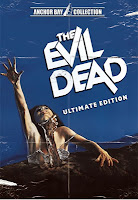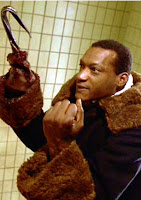 The promotional campaign for the Batman sequel The Dark Knight has been impressive with its creative and engaging mix of viral, ambient, and experiential marketing. The film doesn't even arrive until July of 2008, but Warner Bros. started planting seeds online back in May of 2007. This build-up has utilized faux websites, international scavenger hunts, and mobile phone messages to heighten the awareness and interest of the movie-going public.
The promotional campaign for the Batman sequel The Dark Knight has been impressive with its creative and engaging mix of viral, ambient, and experiential marketing. The film doesn't even arrive until July of 2008, but Warner Bros. started planting seeds online back in May of 2007. This build-up has utilized faux websites, international scavenger hunts, and mobile phone messages to heighten the awareness and interest of the movie-going public.To compete for attention in environments that are over-saturated with advertising, media companies are forced to experiment with innovative and unconventional methods of promotion. Audiences have become so jaded that it takes something really clever, humorous, or just plain shocking to trump consumer apathy and ad blindness.
 Forgoing the traditional advertising approaches will help keep a film from getting lost in the crowd, but it also brings a new set of risks to the table. The public might be confused and misinterpret the campaign, or worse, not even realize that something is being advertised.
Forgoing the traditional advertising approaches will help keep a film from getting lost in the crowd, but it also brings a new set of risks to the table. The public might be confused and misinterpret the campaign, or worse, not even realize that something is being advertised.Last year, guerrilla marketing efforts for the Aqua Teen Hunger Force movie went awry when Boston police mistook the electronic placards for improvised explosive devices. Although Cartoon Network's parent company Turner Broadcasting had to pay a couple million dollars in recompensation to the city, the wealth of news coverage from the event provided more publicity for the film than the channel's original marketing plan ever could have.
 Twentieth Century Fox must have thought they had the ultimate viral marketing campaign for Fantastic Four: Rise of the Silver Surfer. The studio had commemorative coin company the Franklin Mint alter the backs of 40,000 U.S. quarters to promote the movie's summer release. The modified coins featured an image of the Silver Surfer and the URL of the film's official website.
Twentieth Century Fox must have thought they had the ultimate viral marketing campaign for Fantastic Four: Rise of the Silver Surfer. The studio had commemorative coin company the Franklin Mint alter the backs of 40,000 U.S. quarters to promote the movie's summer release. The modified coins featured an image of the Silver Surfer and the URL of the film's official website.Within days of releasing the custom currency into circulation, Fox received notice from the U.S. Mint that advertising on any form of legal tender was a federal crime. The news had fans seeking out the controversial coins, and the studio no doubt saw the resulting fine as a small price to pay for such publicity.
 Also that summer, Fox insulted modern pagans when they hired British artist Peter Stuart to put a massive Homer Simpson next to the carving of the giant hill figure at Cerne Abbas in Dorset, England. The image depicted Homer in his underwear and wielding a donut in his left hand. The promotional stunt garnered plenty of press, and in turn, even more publicity for the studio's already over-hyped release of The Simpsons Movie. While the famously phallic geoglyph is a chalk figure carved into the hillside, the giant Homer was just a fleeting joke, rendered in water-soluble, biodegradable paint.
Also that summer, Fox insulted modern pagans when they hired British artist Peter Stuart to put a massive Homer Simpson next to the carving of the giant hill figure at Cerne Abbas in Dorset, England. The image depicted Homer in his underwear and wielding a donut in his left hand. The promotional stunt garnered plenty of press, and in turn, even more publicity for the studio's already over-hyped release of The Simpsons Movie. While the famously phallic geoglyph is a chalk figure carved into the hillside, the giant Homer was just a fleeting joke, rendered in water-soluble, biodegradable paint. Sony dipped into the Disneyland trick bag to trumpet the opening of The Water Horse: Legend of the Deep in Japan. A hologram-like image of the Loch Ness legend rose out of Tokyo Bay to astonished onlookers. The illusion was produced by a very precise interaction between water, light, and sound. Computer controlled water jets created a 15-meter wide liquid screen onto which the images were projected. Disney theme parks pioneered this kind of hydrotechnic display over fifteen years ago in their nightly Fantasmic! show. Watch a report of the event from Fuji News Network, or for an unedited angle, there's a Japanese onlooker's video as well.
Sony dipped into the Disneyland trick bag to trumpet the opening of The Water Horse: Legend of the Deep in Japan. A hologram-like image of the Loch Ness legend rose out of Tokyo Bay to astonished onlookers. The illusion was produced by a very precise interaction between water, light, and sound. Computer controlled water jets created a 15-meter wide liquid screen onto which the images were projected. Disney theme parks pioneered this kind of hydrotechnic display over fifteen years ago in their nightly Fantasmic! show. Watch a report of the event from Fuji News Network, or for an unedited angle, there's a Japanese onlooker's video as well. The apocalyptic weather in The Day After Tomorrow inspired the creative location of this billboard. The idea is simple and echoes the film's plot wonderfully. It was placed just off the coast of Mumbai, India, to promote screenings at the local multiplex Fame-Adlabs.
The apocalyptic weather in The Day After Tomorrow inspired the creative location of this billboard. The idea is simple and echoes the film's plot wonderfully. It was placed just off the coast of Mumbai, India, to promote screenings at the local multiplex Fame-Adlabs. |  |
 STAR Movies made clever use of ambient marketing with these parking space ads for the Asian network's premiere of Dude, Where's My Car? in Hong Kong.
STAR Movies made clever use of ambient marketing with these parking space ads for the Asian network's premiere of Dude, Where's My Car? in Hong Kong. Another inspired ad placement from STAR Movies in Hong Kong. The image is printed on removable static cling vinyl and when affixed to a car's side mirror, it recalls a famous shot from The Lost World: Jurassic Park.
Another inspired ad placement from STAR Movies in Hong Kong. The image is printed on removable static cling vinyl and when affixed to a car's side mirror, it recalls a famous shot from The Lost World: Jurassic Park. Several movie theaters throughout the Netherlands grabbed the attention of passers-by with a realistic severed arm gag placed in front of their establishments. The fake limb gripped a dummy DVD announcing that Quentin Tarantino's "Death Proof" was now showing.
Several movie theaters throughout the Netherlands grabbed the attention of passers-by with a realistic severed arm gag placed in front of their establishments. The fake limb gripped a dummy DVD announcing that Quentin Tarantino's "Death Proof" was now showing. This same trick was used earlier in a Russian ad campaign for HBO's The Sopranos. Local cabs had folks doing double takes when it appeared that a dead mobster's arm was dangling from the trunk. Bumper stickers bearing the show's logo were strategically placed to keep people from needlessly calling the authorities.
This same trick was used earlier in a Russian ad campaign for HBO's The Sopranos. Local cabs had folks doing double takes when it appeared that a dead mobster's arm was dangling from the trunk. Bumper stickers bearing the show's logo were strategically placed to keep people from needlessly calling the authorities. Interestingly, an identical guerrilla tactic was used in New York for an Art Directors Club Young Guns advertising assignment.
Interestingly, an identical guerrilla tactic was used in New York for an Art Directors Club Young Guns advertising assignment. The line between cleverness and poor taste is becoming increasingly blurred as advertisers strive to make an impression. This faux crime scene in a Singapore bathroom for the CSI TV series is undoubtedly successful at conveying the show's morbid milieu. However, it must have startled and confused a number of restroom visitors who weren't so pop culture savvy.
The line between cleverness and poor taste is becoming increasingly blurred as advertisers strive to make an impression. This faux crime scene in a Singapore bathroom for the CSI TV series is undoubtedly successful at conveying the show's morbid milieu. However, it must have startled and confused a number of restroom visitors who weren't so pop culture savvy. |  |  |
This promotional stunt for Kill Bill in India is bolder still. The adhesive floor gag only pays off when you actually enter the stall, leaving more squeamish individuals to seek out another restroom.

The bloodiness of Kill Bill is effectively illustrated by this billboard promoting the premiere of the film on New Zealand cable television. Transcending the confines of the advertisement's frame, the gore not only coated the surrounding wall, but it sprayed a nearby prop car for a nice mix of traditional and ambient marketing.
 One more example of innovative Kill Bill marketing, this time making good use of the way elevator doors open.
One more example of innovative Kill Bill marketing, this time making good use of the way elevator doors open. The effect is even more suited to this campaign for Superman Returns in Brazil.
The effect is even more suited to this campaign for Superman Returns in Brazil. The multiple panels of a revolving door can also be effectively utilized, as shown by this simple ad for Catch Me If You Can in Hong Kong.
The multiple panels of a revolving door can also be effectively utilized, as shown by this simple ad for Catch Me If You Can in Hong Kong. Even something as mundane as the doors of a bus can be enhanced with an inspired idea.
Even something as mundane as the doors of a bus can be enhanced with an inspired idea. This shark-themed wraparound ad for the National Geographic Channel is very eye-catching and truly memorable.
This shark-themed wraparound ad for the National Geographic Channel is very eye-catching and truly memorable. |  |
 An otherwise unremarkable Ugly Betty spot becomes much more with the placement of an oversized paper bag over the sign. The covering draws attention while also evoking the stereotype of the title character. Just the vital information is still showing (what show, what time, and what channel).
An otherwise unremarkable Ugly Betty spot becomes much more with the placement of an oversized paper bag over the sign. The covering draws attention while also evoking the stereotype of the title character. Just the vital information is still showing (what show, what time, and what channel). And finally, this inspired use of the bulbs behind the sign brilliantly brings to mind a trio of Star Wars light sabers, while simultaneously announcing the arrival of the third installment in George Lucas's latest trilogy.
And finally, this inspired use of the bulbs behind the sign brilliantly brings to mind a trio of Star Wars light sabers, while simultaneously announcing the arrival of the third installment in George Lucas's latest trilogy.




























